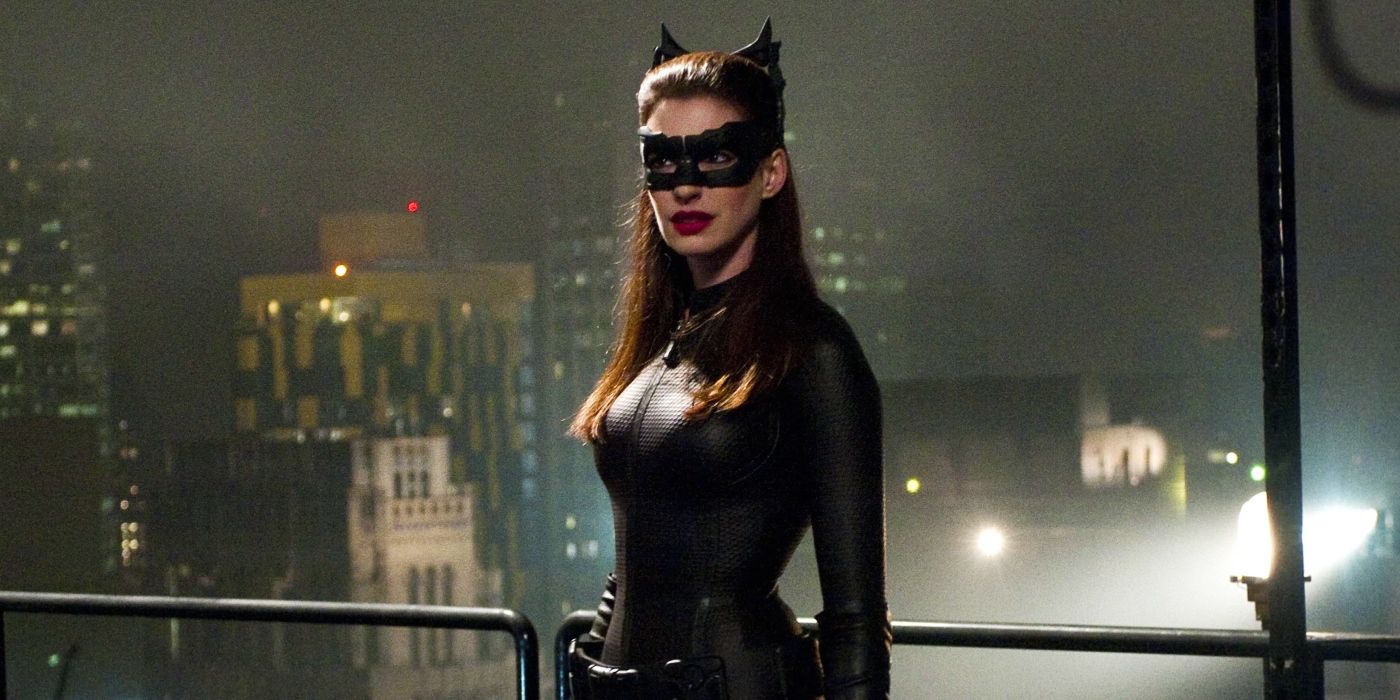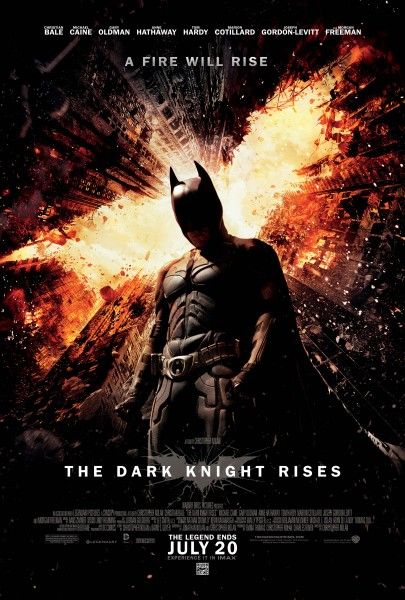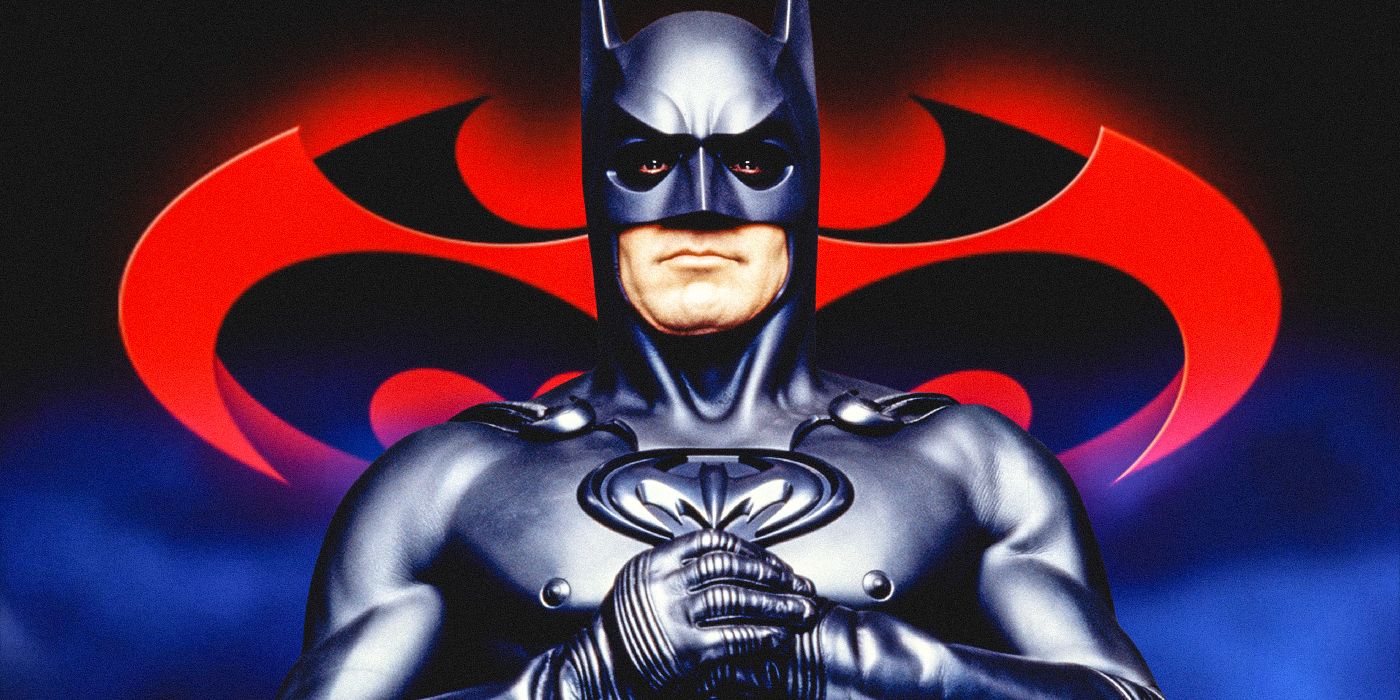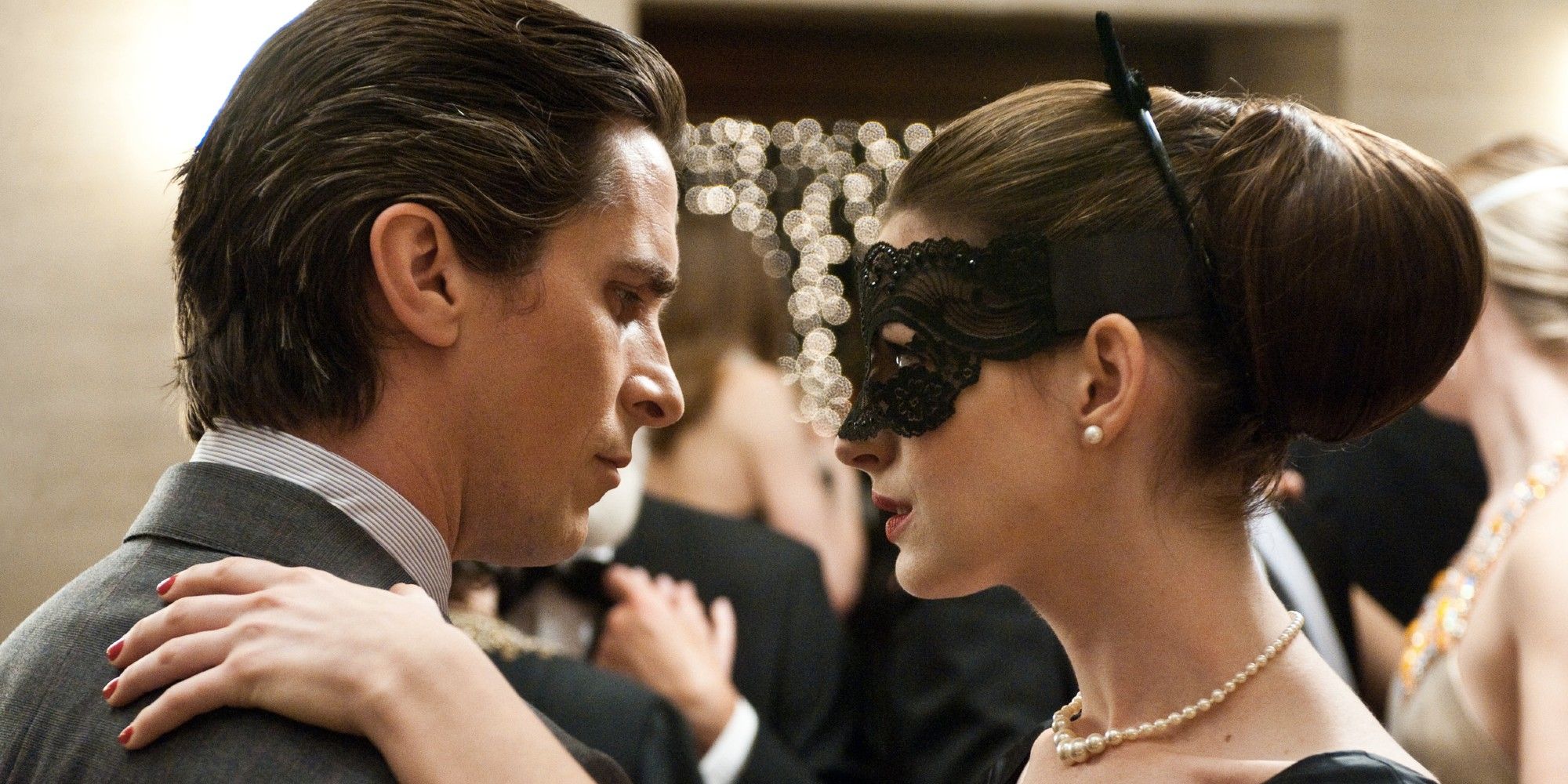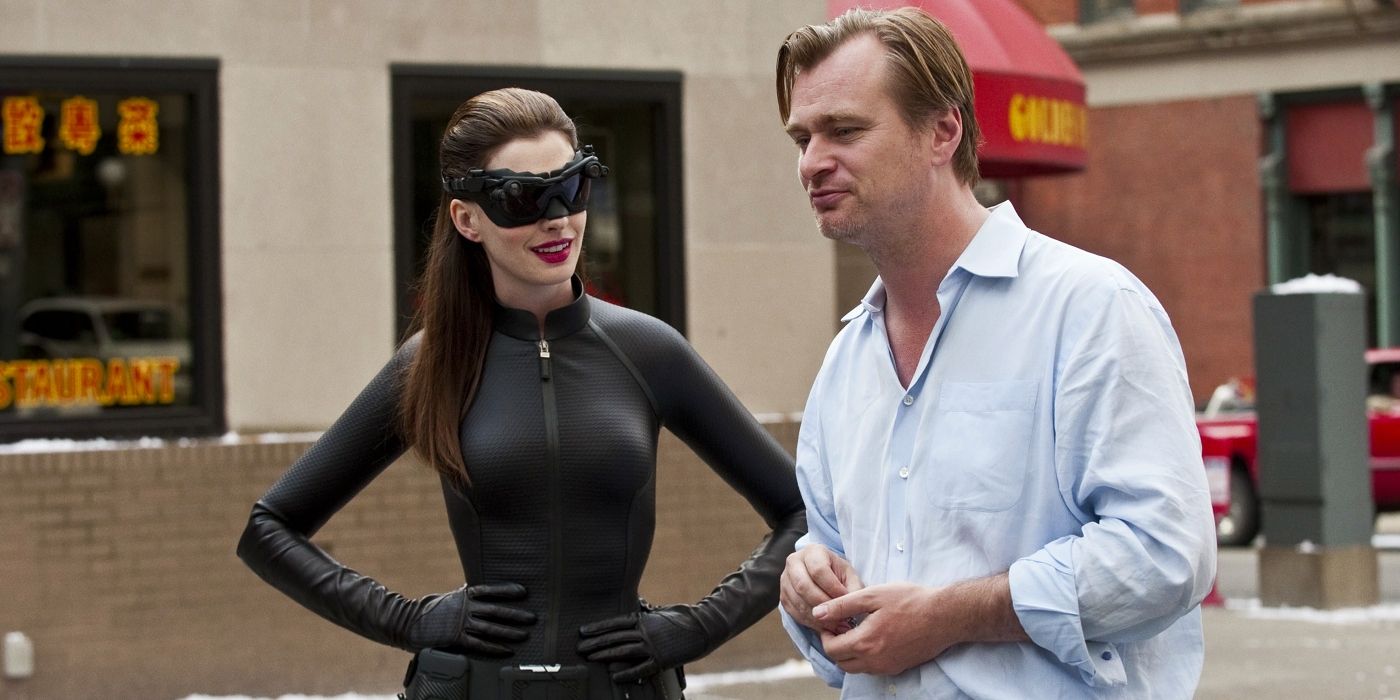The Big Picture
- Anne Hathaway's Catwoman is a faithful adaptation of the iconic DC character.
- Catwoman plays a pivotal role in exploring themes of financial inequality and creating character growth in Batman.
- Hathaway's portrayal elevates the film's entertainment with humor, chemistry with Bale, and impressive stunt work.
Batman’s enemy-turned-lover, Catwoman, is one of the most iconic characters in the DC Comics pantheon, almost equal in popularity to the Caped Crusader himself. Also known as Selina Kyle, the fixture to the Batman mythos has been adapted into various other forms of media. Julie Newmar, Lee Meriweather, and Earth Kitt’s heightened performances in the role fit well within the equally campy 1960s Batman television series and its related film, while Zoë Kravitz and especially Michelle Pfeiffer were widely praised for their darker interpretations of the character in the films The Batman and Batman Returns. But another cinematic Catwoman doesn’t always get the credit she deserves. Anne Hathaway played Selina in The Dark Knight Rises, the final film in Christopher Nolan’s Batman trilogy, and her depiction is an unsung highlight of the already underrated film.
Anne Hathaway's Catwoman Is Key to Christopher Nolan's Final Batman Movie
The Dark Knight Rises introduces Hathaway’s Selina while she is masquerading as a maid at Wayne Manor. After she steals the pearl necklace Bruce Wayne’s (Christian Bale) mother was wearing the night she was murdered, along with samples of Bruce’s fingerprints, he begins investigating her. As Batman, he discovers Selina’s involvement in a elaborate conspiracy involving corrupt businessman John Daggett (Ben Mendelsohn) and Bruce’s old enemies, the League of Shadows, who are now led by the masked terrorist Bane (Tom Hardy). However, as he unravels more of the mystery, Bruce becomes sympathetic to Selina’s motives, and she eventually redeems herself, helping him save Gotham City, after which the pair begins a romance and retires to Europe.
Selina’s declining sanity and mission of vengeance against Max Shreck (Christopher Walken) in Batman Returns gives Pfeiffer a lot of dynamic material to work with, and she definitely turns in an incredible performance. Hathaway and Nolan, however, deliver the first cinematic adaptation of the character that is both serious and generally faithful to her comic book personality and history. Pfeiffer’s version is initially a lonely, shy secretary who becomes Catwoman after a mystical resurrection following Shreck pushing her out a window. Hathaway’s is much more immediately recognizable to viewers familiar with other versions of the character when The Dark Knight Rises begins, at which time she is already operating as a talented thief.
Although she hides significant personal issues and insecurities, her personality is largely confident, witty, and manipulatively seductive, with Hathaway stealing many of the scenes she appears in. Like many mainstream versions of Catwoman from the comics, Hathaway’s Selina (who is never referred to by her supervillain name in the relatively realistic movie) is also motivated by desperation, survival, and the desire to protect loved ones.
Anne Hathaway's Catwoman Plays Into Batman's Obsession With Wealth
More than any of the prior Batman movies, The Dark Knight Rises explores themes of financial inequality, scrutinizing Bruce’s immense wealth and how he has used it. Bane inspires members of Gotham’s lower economic classes to revolt against the wealthy and the city government. While this is ultimately just a way for him to disguise his true plan to destroy the city in its entirety with a nuclear bomb, many of the points he makes about the unfair nature of the American economy are still valid, as are some of the criticisms he and other aspects of the film make of the law enforcement strategies Bruce and his allies, such as Gary Oldman's Police Commissioner Jim Gordon, have enacted to control Gotham.
Selina represents something of an ideological middle ground between the two extremes. Although she becomes visibly uncomfortable with the violent tactics the revolution employs even before learning the truth about the bomb plot, she is initially in favor of it despite her fear of Bane, telling Bruce, “There’s a storm coming, Mr. Wayne. You and your friends better batten down the hatches, because when it hits, you’re all going to wonder how you ever thought you could live so large and leave so little for the rest of us.”
She makes Bruce recognize his own privilege when she replies to his criticism of her criminal activities by pointing out that she, like many criminals, felt forced into illegality because of economic desperation and alludes to the difficulty of making an honest living in America after being convicted or suspected of any crime, noting, “There’s no fresh start in today’s world. Any twelve-year-old with a cell phone can find out what you did. Everything we do is collated and quantified, everything sticks.” Ironically, Selina’s own goal is to make the kind of fresh start for herself she claims not to believe in. She agreed to work for Daggett in exchange for him giving her an experimental computer program called “the clean slate,” which could erase all digital records of anyone whose biological information is entered into the system. Daggett claims the program never actually existed, but Bruce later reveals that he covertly acquired it “to keep out of the wrong hands,” and agrees to let her use it in exchange for helping him take down Bane.
Catwoman Makes Batman a Better Person
Although she initially double-crosses him by turning him over to Bane to secure her own safety, in the film’s climax, Selina proves her inherent goodness by continuing to help Bruce fight to save the city even though he’s already given her the program. Her influence, along with that of other characters like Alfred (Michael Caine) and Robin “John” Blake (Joseph Gordon-Levitt) is implied to have contributed to Bruce’s decision to have his remaining wealth donated to aid poor children after he is legally declared dead.
One could argue that The Batman does a better job of exploring these themes. This is especially because, given its story of a citywide conspiracy headed by mob boss Carmine Falcone (John Turturro) and supported by many police, and the fact that its villain, The Riddler (Paul Dano) is legitimately motivated by ideas of class warfare, unlike Bane, but Nolan and company still deserve credit for how they depicted the topics, and Hathaway’s Selina is crucial to their efforts at doing so.
Anne Hathaway Brings Levity to 'The Dark Knight Rises'
Beyond her thematic importance, Hathaway’s Selina also simply adds a lot to the film’s entertainment value. Despite its generally dark, emotional tone, The Dark Knight Rises, like all of Nolan’s Batman films, does make frequent use of effectively dry humor. Hathaway is responsible for delivering some of the most amusing comedic bits, with particular highlights being when Selina feigns incompetence and anxiety to manipulate men, only to visibly return to her controlled and commanding persona once she’s gotten what she wants. Hathaway and Selina also bring out new facets of Bruce’s character, and, consequently, Bale’s performance. Although Bale creates compelling dynamics with all of his female co-stars throughout the trilogy, his chemistry with Hathaway is particularly electric, and in their scenes together, the usually reserved, stoic Bruce shows a quietly playful, surprisingly humorous side of his personality, much as the character often does while interacting with Catwoman in the comics.
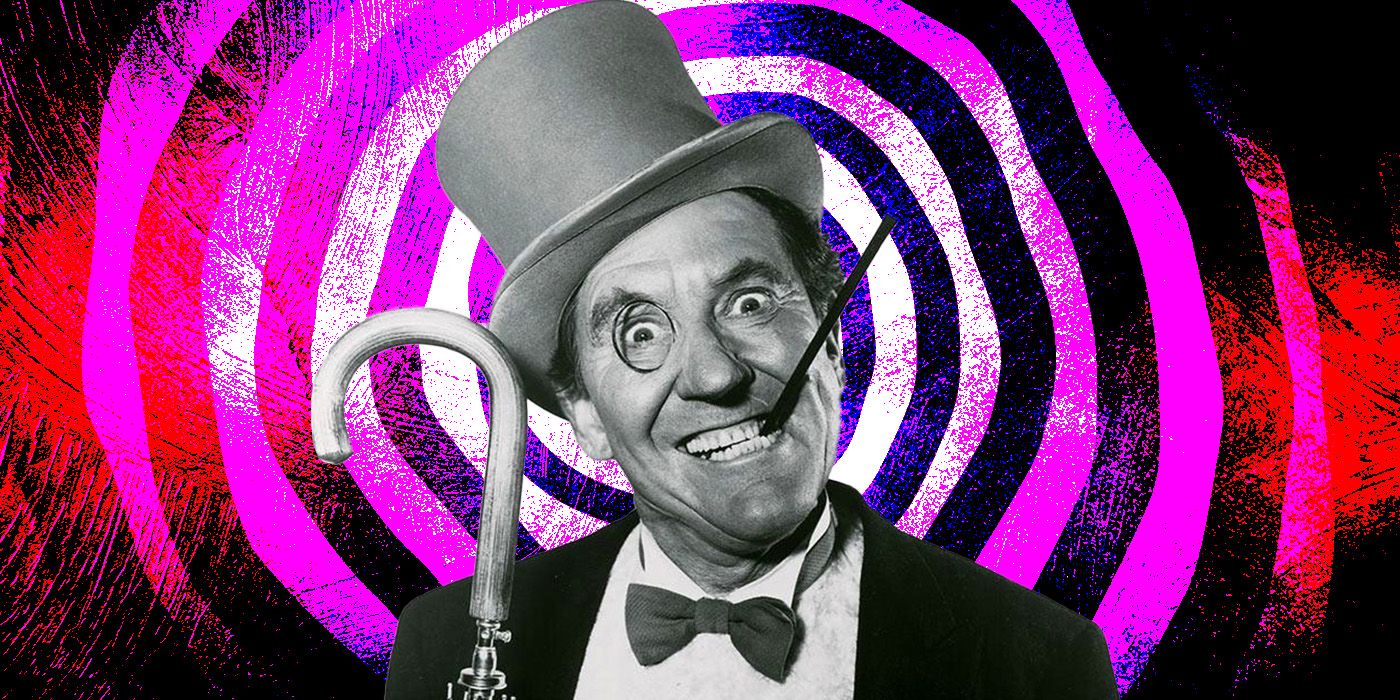
This Is the Most Underrated Version of the Penguin in Batman History
His role in the 1966 Batman series is the best screen depiction of the villain.
In a 2020 interview with Variety, Hathaway recalled putting herself through an intense training regimen prior to shooting, so that she could perform many of the character’s stunts herself, something Nolan had encouraged. Her hard work pays off, especially in fight scenes where Selina and Bruce work together to fight members of the League, which are some of the most viscerally exciting scenes in the trilogy and the most pleasing for fans of the comics. Most of the supporting characters in the trilogy feel very grounded in reality. While her personality and motives ensure that she is still a believably human character, the impressive physicality Hathaway brings to the role is one of many aspects of her performance that separates the character from the rest of the cast, giving her an air of heightened power that only Bruce and the trilogy’s supervillains share and is fitting of their larger-than-life alter egos.
Anne Hathaway Says Christopher Nolan Helped Her Career
Hathaway recently sung Nolan’s praises in a Vanity Fair interview, expressing her gratitude to him for continuing to work with her during a period in which her popularity dwindled. The actress recalled the difficulties she endured during an era of Internet discourse referred to as “Hathahate,” in which moviegoers and other online commentators criticized her with particularly intense, unwarranted viciousness. The backlash was arbitrary and unfair even by the low standards of online etiquette, and seemed to be motivated solely by Hathaway’s experimentation with more dramatic and unusual roles after her early success in family-friendly and comedy films. Ironically, the controversy peaked right around the time she earned her well-deserved Academy Award for Supporting Actress for her work in Tom Hooper’s Les Misérables, which was released a few months after The Dark Knight Rises.
While most Oscar winners enjoy a plethora of new opportunities after receiving such an award, Hathaway notes that her honor was followed by a period in which “a lot of people wouldn’t give me roles because they were so concerned about how toxic my identity had become online.” She said, “I had an angel in Christopher Nolan, who did not care about that and gave me one of the most beautiful roles I’ve had in one of the best films that I’ve been a part of.” Although this quote specifically refers to Nolan’s decision to cast her in the role of astronaut Amelia Brand in their second film together, the 2014 science fiction epic Interstellar, it was their collaboration on The Dark Knight Rises that first showed why he and Hathaway are such a strong team, and hopefully now that Hathahate has largely been abandoned, more movie and comic book fans will start giving Hathaway the praise she deserves for creating such a faithful and compelling version of Catwoman.
The Dark Knight Rises is available to watch on Max in the U.S.


